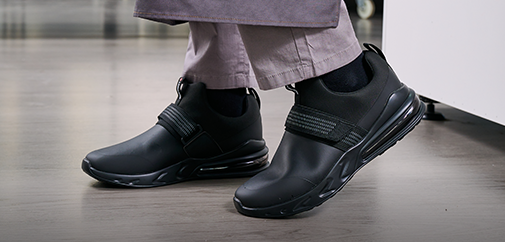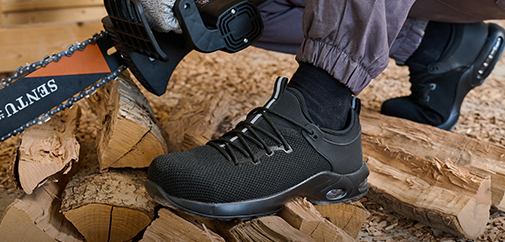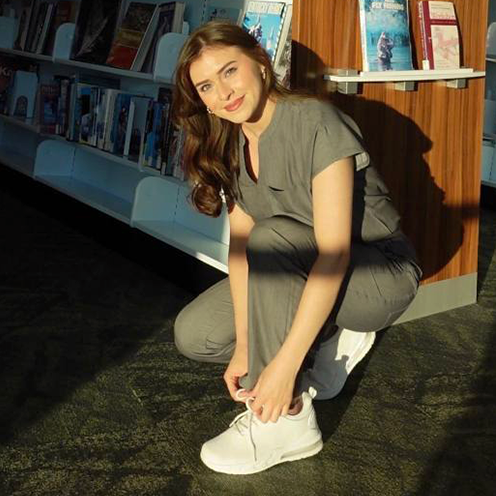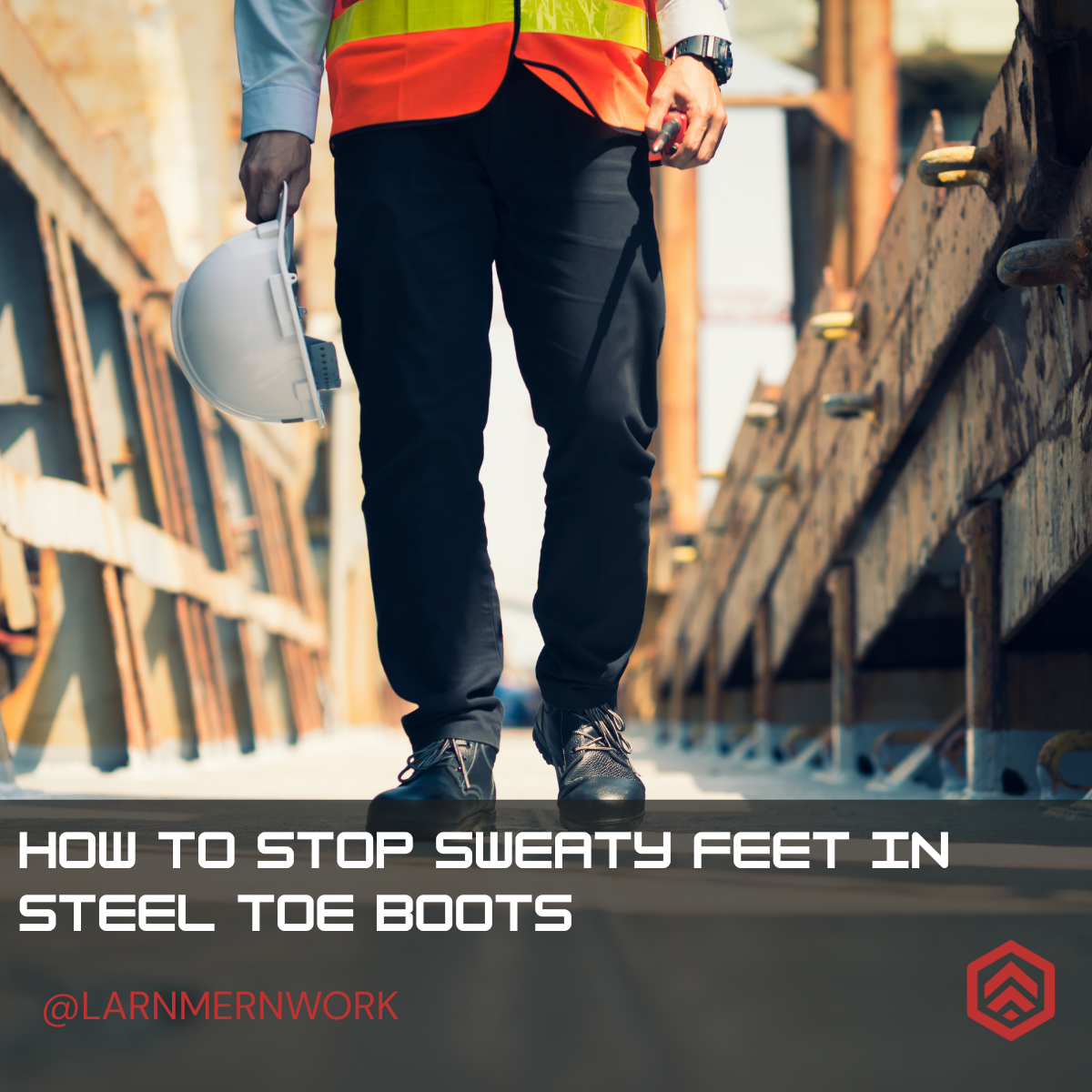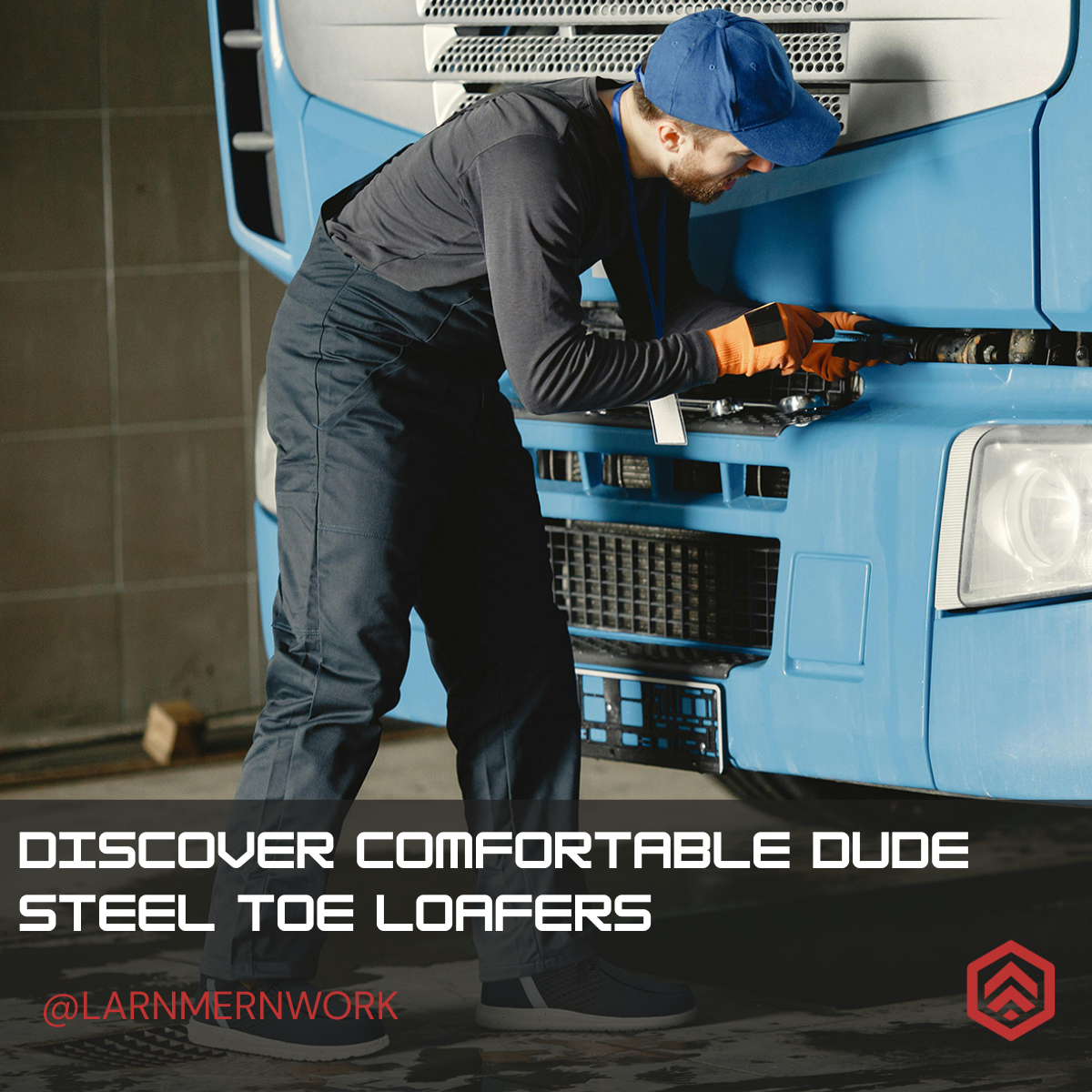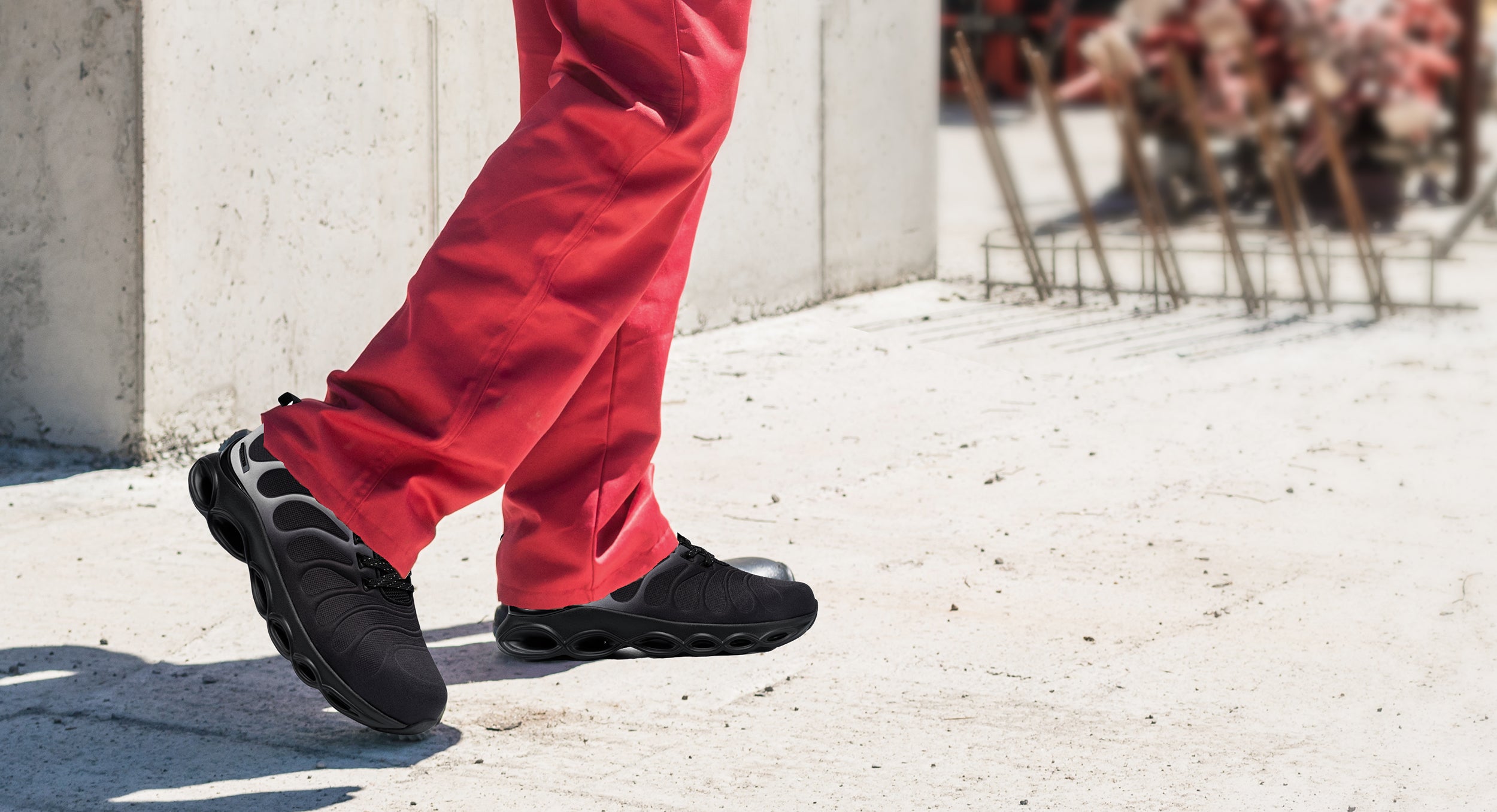Steel toe shoes are essential for many jobs, but they often come with a price: feet problem. If you’ve ever thought, "Why do steel toe shoes hurt my feet?" You are not alone. Many workers face discomfort from blisters, pain, and even long-term foot problems after wearing these shoes daily.
We understand the struggle as someone has experienced in the workplace security gear and footwear solution. Steel toe shoes protect your toes from heavy impacts, but their design can also cause issues. The good news? There are ways to fix this problem so your workday does not feel like torture. How to keep reading to learn!
Key Takeaways
- Steel toe shoes can cause pain due to bad shapes, lack of arch support and rigorous construction. A proper fit is important to avoid issues such as blisters and toe compression.
- Insoles with good arch support helps prevent problems such as facilitation fasciitis. Custom orthotics provide additional comfort for daily steel toes shoes.
- Moisture digging and padded socks reduce and rub the discomfort from sweat during long work.
- Breaking into new shoes gradually prevents hardness and reduces the possibility of leg pain or blisters over time.
- Constant leg pain may indicate serious issues; If swelling, numbness, or walking difficulties occur regularly, seek help.
Common Reasons Steel Toe Shoes Hurt Your Feet
Steel toe shoes can cause discomfort for many reasons. Some issues come from the design of the shoe or how it fits your foot.
Poor fit or size
Too tight or too loose steel toe shoes hurt toes and cause blisters. Improper sizing creates pressure points, making your feet sore after a long shift. Kathy, for example, wore size 9 wide but still felt painful toe pressure.
A bad fit can also lead to calluses and foot pain over time. Wearing the wrong size may make comfortable safety toe shoes feel impossible to find. Choosing extra wide steel toe shoes might help if your feet feel cramped in regular sizes.
Lack of proper arch support
A wrong fit is not the only cause of pain. Shoes can leave your feet after a long time without proper arch support. Without support, your arches collapse, causing tension on your heel and toes.
It often leads to painful conditions such as plantar fasciitis.

Using insoles with strong arch support can ease this stress. Custom orthotics are a good option if you wear steel-toe shoes daily for extended periods. These will keep your feet aligned and reduce discomfort during work shifts.
Comfortable arches mean less heel pain by the end of the day.
Rigid and heavy construction
Steel toe shoes are not flexible. The rigid structure can limit your foot’s natural movement. It performs simple tasks like walking or standing over time. Your feet may be stressful after a long day at work.
These shoes are also heavy due to steel cap. Excess weight puts more stress on your feet, ankles and joints. Over time, it can cause fatigue and discomfort for blue collar workers like you who spend hours on their feet daily.
Common Foot Problems Caused by Steel Toe Shoes
Steel foot shoes can cause many painful issues over time. These problems often come from pressure, rubbing or poor support inside the shoes.
Blisters and calluses
The blisters are formed from a constant rubbing between their toes and hard steel toe cap. This is when the shoes do not fit well or do not break properly. Tight spots or loose areas cause friction, causing bubbles filled with painful fluid on your skin.

Calluses form frequent pressure on your feet, especially under the toes or ball of the toes. Over time, wearing thick skin patches and safety against tears. Poor shoes design or bad shape makes it worse.
As one worker said,.
A good pair of work shoes can make all the difference for long shifts.
Toe compression and pain
Steel toe shoes that are too small can squeeze your toes. This pressure leads to pain, intercoured toenails, and even distortion over time. If the toe box is narrow, it forces your feet to an unnatural shape.

Improper size also causes injury and cuts. Ensure that your toes have enough space to move without feeling tight or square inside the shoes.
Plantar fasciitis
Plantar fasciitis causes heels pain. This occurs when the plantar fascia, a thick tissue under your foot, becomes swollen. You can feel severe pain in your heel or arches, especially in the morning.
Standing on hard surfaces throughout the day increases your risk. Wearing steel toe without proper support can make this worse.
Supporting shoes and good quality insole can help reduce pain. If necessary, over the counter anti-inflammatory drugs (NSAIDs) can reduce inflammation like ibuprofen. Taking a break to spread your legs also helps prevent rigor and discomfort after a long shift.
Solutions to Relieve Foot Pain
Find simple fixes to ease your foot pain and make work more comfortable—start today!
Choose the right size and fit
Make sure your steel toe shoes fit you well. Poorly fitted shoes can cause pain and cause foot problems. To find the right size, your feet are measured by a professional. Legs can change over time, so regular checkups help.

Usually try on shoes with socks that wear for work. There should be enough space for your toes so that they can be felt without feeling tight. Shoes can support better ankle, reduce stress during long time of work. If weight is an issue then consider switching to lightweight steel toe shoes; They are lightweight but still provide solid security.
Use high quality insoles for support
Getting the right size is only the beginning, but your feet also need proper support inside your shoes. High quality insoles steel toe shoes can bring a big difference in reducing pain. They help by remarrying the pressure equally throughout your entire leg. It reduces stress on specific areas and prevents discomfort.

If you have unique leg needs or severe pain, custom orthotics are another option. These improving incentive arc support and provide cushioning for long working days. A good incense can also reduce the stiffness caused by hard boot construction, which gives you more comfort with every step.
Upgrade your feet throughout the day!
Wear moisture-wicking and padded socks
With merino wool compression, moisture and socks, keep your feet dry throughout the day. They pull the sweat away from the skin and help reduce smell and discomfort. Dry legs remain coolers and steel toe is less likely to have blisters.
Padded socks add extra cushions where it matters the most. They support the pressure points and help reduce pain during long hours of work. A good pair can create a big difference in comfort with heavy shoes.
Break in your shoes properly
Start wearing indoors and break your steel toe into shoes. Do this for a short period each day. It helps to loosen the material and reduces hardness without putting too much stress on your feet.

During this process, wear thick, padded socks and protect your skin and reduce pressure points. Use mollskin pads on areas that rub the most to prevent blisters. Make sure that shoes fit properly before starting, as a bad fit can cause pain even after breaking them. Later prevents inconvenience at the job site in gradual wear.
When to Seek Professional Help
Constant leg pain is a sign that you need help. Inflammation, numbness, or trouble walking should not be ignored. These issues can point to serious conditions such as heels or haglund syndrome.
An orthopedic specialist might examine your feet and use X-rays to find the problem. Treatments may include anti-inflammatory medicines, cortisone shots, or physical therapy for ongoing pain.
Surgery is rare but can treat severe cases that don't improve with other methods. Don't wait too long to act, early care can prevent bigger problems.
Conclusion
Steel toe shoes protect your feet at work, but they can also cause pain. The wrong size, poor support, or heavy materials often lead to discomfort. By choosing the right fit, adding insoles, and breaking them in properly, you can reduce pain.
Take small steps to care for your feet daily and don’t ignore lingering issues. Healthy feet make long shifts much easier!
Build Comfortable Feet for Work With Larnmern
It is not your reality to deal with sore feet, painful pressure points, lack of arch support,and overall fatigue after a long innings in steel toe shoes. As a blue collar , the right shoes are important not only for safety, but also for your long-term comfort and well-being.
At Larnmern, we understand the unique demands placed on your feet and are here to support your journey towards healthier, comfortable workdays. We specialize in crafting comfortable safety shoes specifically engineered to address these common problems. With features like spacious wide and extra wide steel toe options to eliminate painful cramping, Larnmern footwear is built for resilience and all-day comfort.
Our mission is to provide durable, protective shoes that help you end your shift feeling better, enabling you to lead a more active life on and off the job. Choose Larnmern – footwear designed to work with your feet, not against them.
FAQs
1. Why do steel toe shoes hurt my feet?
Steel toe shoes can hurt your feet because of poor fit, lack of cushioning, or improper arch support. Tight or loose shoes may also cause pressure points and discomfort.
2. What are the common problems with steel toe shoes?
Common issues include pinching at the toes, inadequate padding, heavy weight causing foot fatigue, and insufficient room for natural movement inside the shoe.
3. How can I stop my steel toe shoes from hurting?
Choose a pair that fits well with enough space in the toe box. Use insoles for extra cushioning and arch support. Break them in gradually to avoid stiffness.
4. Are there solutions if my steel toe shoes feel too tight?
Yes, you can stretch them using a shoe stretcher or wear thick socks while breaking them in. Switching to wide-fit options might also help reduce pain caused by tightness.


